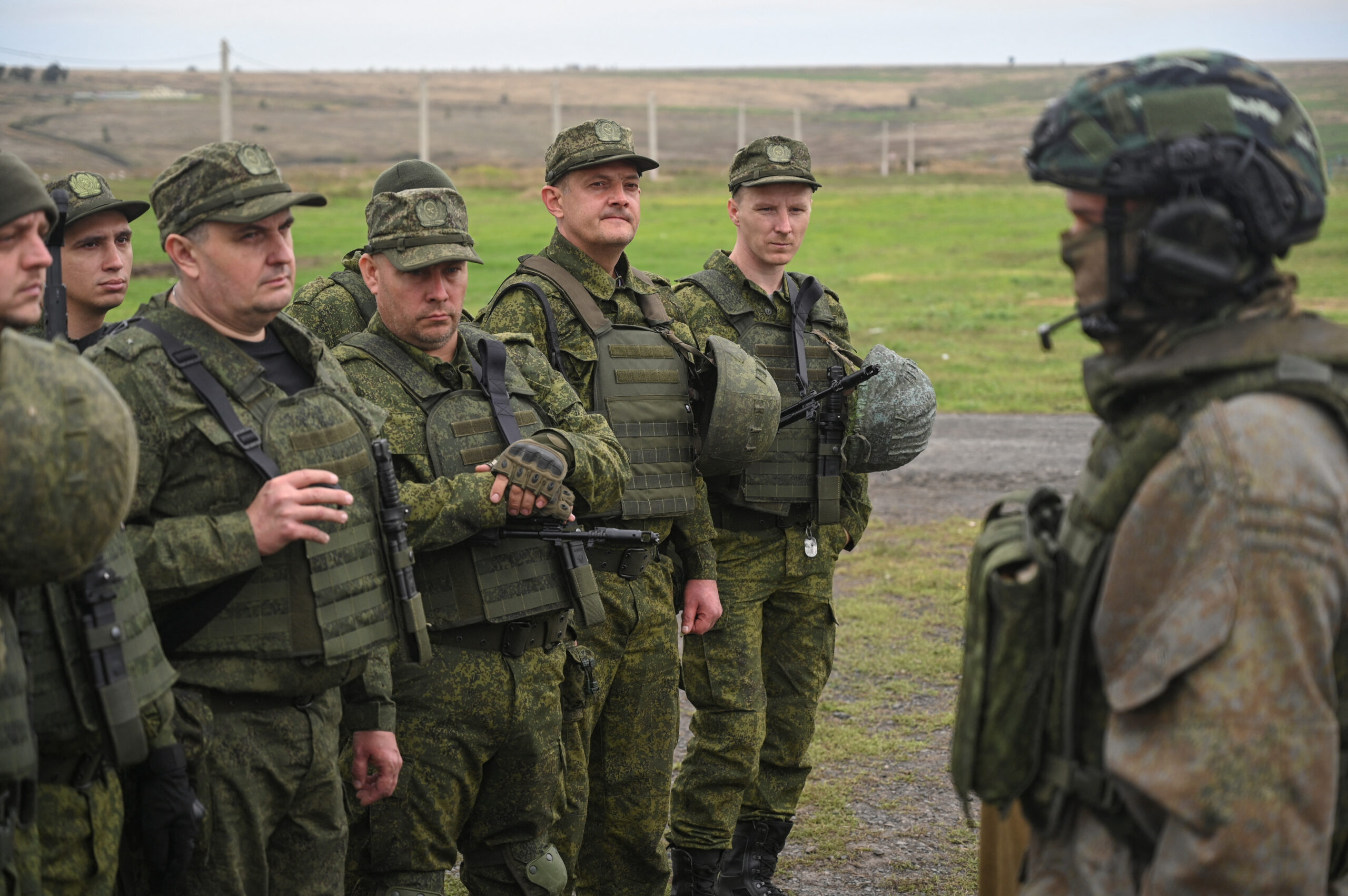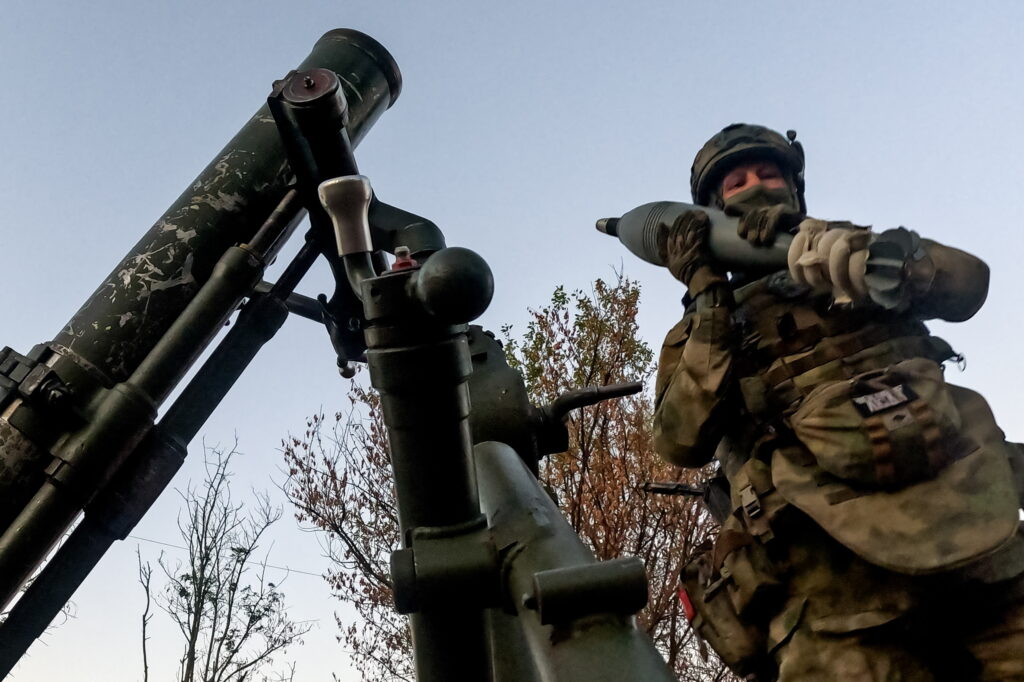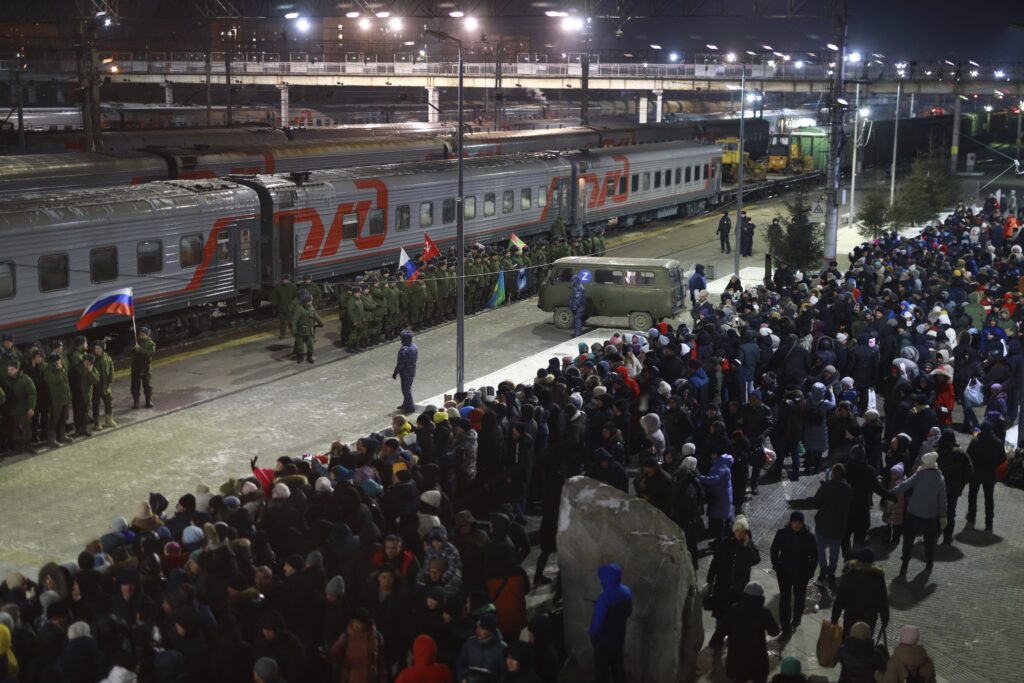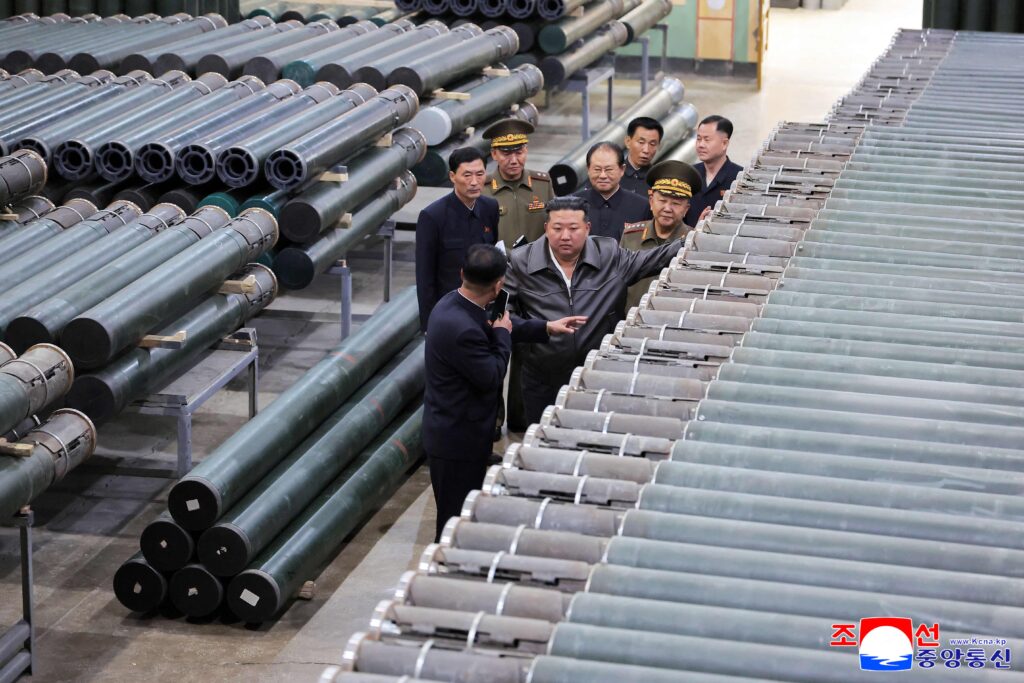With Ukraine’s counter-offensive finally taking shape, Russia’s response is not yet clear. Speculation from Estonia’s military intelligence apparatus claims Russia will likely undertake a new wave of mobilization akin to what was seen in late September last year, while the Russian mercenary leader Yevgeniy Prigozhin has also made an ominous call for full mobilization. This raises the question of whether the Russian state can currently marshal the manpower needed to achieve its goals in Ukraine. The stakes are high given the ongoing embarrassment of raids in Belgorod and a looming risk of a major of loss of territory in Ukraine. You’d think another round of mobilization was imminent.
So far, there is little hard evidence of anything approaching the same kind of drive to mobilize 300,000 men that began last September. After all, the Kremlin officials have a problem: the economic system and parallel political institutions they’ve built to safeguard the country’s stability make sustained mobilization for war an impossibility. Worse, the growing importance of construction and real estate to the economy — and to the regime’s efforts to reshape the nation’s political economy — depend on labor supply as do any prospects for import substitution.
Constructing deficits
Before mobilization was first announced last September, labor shortages had been a significant area of policy concern, and had been one right through the Covid-19 pandemic. Surveys from 2021 suggest 9 in 10 companies reported hiring shortfalls, with 63% of those respondents saying there were no suitable candidates. That year, small and medium-sized businesses accounted for 28% of all job vacancies. That figure has since risen to 33%, suggesting that state-owned companies and large firms are increasingly outbidding them for the best talent.
Surveys of businesses run by the Bank of Russia for Jan.-March of this year showed the worst results for labor shortages since the default crisis of 1998, with manufacturing, utilities, and transport and logistics the worst hit. Figures vary, but somewhere in the range of 500−700,000 people have emigrated — many of whom had been working in skilled jobs with opportunities to work remotely, such as in IT. That’s roughly 0.8% of the official workforce from last year, a figure inflated by Ukrainians voluntarily or forcibly relocated to Russia and pensioners working past their retirement without reporting their income.
Deficits of labor affect each sector differently, both because some businesses are more systemically important and because of the role migration plays for some sectors, particularly construction. Quantifying the true scale of labor shortages and effect of bottlenecks is immensely difficult, but the case of the construction sector offers a useful starting point.
The Ministry of Construction claims that the construction sector is short roughly 250,000 people while Vladimir Koshelev, a member of the Duma’s committee on construction and public utilities, has suggested the shortfall is as large as 5 million. The truth is somewhere in between, but larger figures are intuitively more astute; ministry officials have cited figures as high as 11 million employed by construction activities. In 2021, 12.3% of the labor officially employed in the sector — then a much lower figure of 6.5 million — were migrants. Since the pandemic began, migrant laborers have pivoted towards transport and logistics due to comparable pay and better conditions. One can find a fair number of stories from 2021−2022 of competing developers paying work crews to abandon competitors’ construction sites and work instead on their own projects.
Last year, investment into transport and storage rose 21.1% and construction by 24.6%; together they accounted for just over 24% of all fixed investment. Since the invasion, construction has consistently posted growth every month, even seeing an acceleration in the last 6 months boosted by the frontloading of spending on infrastructure and non-housing projects (these were budgeted with state money prior to the invasion to cushion the economy against the sanctions shock.) Construction hit 9% year-on-year growth in Q1 2023. By comparison, retail turnover has declined in the range of 8% year-on-year as of Q1.
The construction of residential property and new logistics infrastructure for the war, alongside a redirection of trade flows, is creating jobs and wages that prop up demand across the country, evidenced by construction’s growing contributions to GDP. But it’s also planting an inflationary timebomb that significantly affects the capacity to mobilize manpower for the military.
Dumbing down
The lack of skilled labor in strategically vital sectors tends to receive the most attention from the perspective of sanctions or economics coverage; this is because of the systemic risks to the military-industrial complex they pose over time. Prior to the exit of 500−700,000 people after the announcement of mobilization, media reports already expressed concern about the worsening shortfalls of graduates skilled in mathematics and engineering — 240,000 students passed the state mathematics exam to enter technical faculties at universities whereas the government had budgeted for 251,000 slots. The number of total students passing math exams, even if not receiving openings in relevant programs, fell 60,000 year-on-year. Though brain drain is nothing new and has worsened significantly over the last decade prior to last February, what’s changed most radically is that émigré scientists and researchers are now no longer able to circulate their work or ideas with colleagues in Russia.
The lost productivity due to the emigration of existing scientists and engineers and a ‘walling off’ of intellectual communities is compounded by an educational system failing to produce enough graduates. Now imagine the difficulties to come now that the Duma rejected a proposal to exempt PhD graduates and PhD students from military service, encouraging yet more students who are engaged in serious specialist fields to emigrate if they can afford to.
On one hand, the Duma’s decision reflects a shared understanding by political elites that the working class can’t be alone in fighting this war. On the other, it speaks to persistent difficulties achieving targets from mobilization. Every possible avenue must be preserved to cast a wide enough net. Devolving this responsibility to mercenary groups and state-owned enterprises privately funding and staffing units relieves the state of some of the heavy lifting.
The damage to the knowledge economy is immense, but not necessarily immediate. Macroeconomic stability can be preserved, if at higher cost, so long as channels to import or steal technology, intellectual property, and other resources remain. Similarly, the loss of higher-paid workers tends to have a smaller effect on demand for goods, which is really where the pain of sanctions is most strongly felt. Arguably emigration has provided a small release valve to prevent further increases in property values driven by mortgage subsidy programs — though it also adds to inflationary bottlenecks for specific goods or services. But what really keeps policymakers up at night is the working class.
Working class heroes
On March 23, Putin signed off on a decree indexing regional minimum wage rates by an 18.5% increase as of January 1, 2024, a national increase from 13,743 rubles per month to 16,345 rubles. The increase is particularly significant given year-on-year inflation has slowed below 4% for the months of March and April. Bank of Russia business surveys also point to sustained improvements in expectations for firms operating in construction, transport, logistics, and retail against declines in manufacturing, services, and agriculture. Some of the rebound is a base effect. Last year’s shock induced so much uncertainty that businesses rightly had little idea of what to expect. Yet they still benefited from higher prices for energy exports. Today’s context says more about domestic policy choices.
Raising the minimum wage is aimed at reducing the degree of precarity experienced by scores of families. Since the imposition of austerity measures in 2014−2015, the monthly minimum wage has lagged costs of living so drastically that as of the pandemic, they were only roughly 1/3 of the implied average worker reported they needed «to make ends meet» based on household surveys. Next year’s increase will cover most of the lag in indexation and potentially increase wages in real terms. Even as access to imported consumer goods and autos production have tumbled, workers at the lowest end of the wage spectrum may see marginal improvements in their purchasing power, having a much larger net effect on the demand for goods than the exit of middle class Russians.
The increase reflects the competing needs to head off significant declines in perceived living standards and difficult conditions for fiscal policy ahead of next year’s Duma and presidential election. Increasing deficit spending to buy votes is unpalatable. By the end of April, the federal budget deficit exceeded 3.4 trillion rubles, a figure 500 billion rubles higher than the budget had planned for the entire year. Planned sales of yuan earned from oil exports to China are accelerating to over $ 900 million a day to finance the deficit at a time when yuan liquidity for Russian banks and businesses is an ongoing concern. Facing pressure on its foreign currency earnings and financing budget spending at the same time, the regime has decided to force the costs onto businesses.
Last year, over 38% of businesses reported increasing their spending on labor, with many noting increases after the announcement of mobilization were intended to retain talent and prevent workers from signing up. This is a roundabout way of acknowledging the degree of precarity many face. These increases are more easily borne by large firms and state-owned enterprises with easy access to capital, state support, or pricing power on their respective markets. This year, over 74% of respondents running small or medium-sized businesses reported they’d increased spending on wages and benefits, 58% of which was driven by pay rises and benefits intended to compete for labor. With labor shortages so acute, small businesses are likely the first to feel the effects. Their logical response will be to raise prices, increasing inflationary pressure for consumers and the state.
Boosting working class wages allows the regime to blunt the welfare losses from rising import prices and the effect of sanctions on the consumer economy. One can detect traces of thinking and proposals from Sergei Glazyev at play — better to measure economic success by the average person’s relative food security, access to housing, and a reduction of economic inequality. It is conceivable that some working class workers may see real terms increases in their ability to buy goods and services in the short-run. But since fighting price increases is one of the highest priorities to preserve stability for budget planning, doing so at the expense of business will end up weakening investment and economic growth. It’ll also increase procurement costs for areas where the defense sector might look to use the defense budget as a means of indirect stimulus.
Good news for people who love bad news
Russia’s assumed material edge in munitions and lower-tech weaponry on the battlefield in Ukraine has relied on past stocks available to be utilized and a larger pool of labor able to increase rates of production in the face of input bottlenecks. The mobilisation last September was intended to recruit approximately 0.4% of the workforce into the miliary, effectively converting that labor from productive uses into net drains on the public balance sheet.
Mobilizing another 0.4% will have little effect on military conditions during Ukraine’s counter-offensive unless the regime intends to toss scarcely trained recruits into combat as a stop gap. Even then, it takes time. At no point has mobilization since September ‘ended,’ rather turning into a slow, grinding effort by the regime’s state and informal apparatuses to rebuild its capacity when needed, amend legislation when relevant, and otherwise continue to find bodies for the front.
But in the aggregate, shifting yet another 0.4% of the workforce into military service, including large numbers of dead or wounded who cannot return to their prior jobs, would undermine economic stability. The deeper chronic shortages of labor become, the more bargaining power workers have to throw sand in the gears of the industry needed to sustain the war. Whether it be demand for pay rises that lead higher inflation (and higher spending costs for pensions, social services, and the military), potential for strike action, or demand for concessions, political or otherwise, all options remaining for the state are bad.
Since the fall of 2021, the Bank of Russia has entertained the notion that the level of unemployment needed to tame inflation may be structurally increasing due to demography and other changes in the Russian economy. Official unemployment was just 3.3% in April, a post-Soviet historic low and a surefire trigger for inflation in the existing orthodoxy governing monetary policy.
There are two principle means to address the problem: an increase in interest rates and an increase in coercion. The former increases the cost of borrowing and servicing public debt backing spending on the war. The latter is effectively a means of scaring labor into submission so that it does not demand more, which poses significant risks as long as ‘partial’ mobilization lumbers on. Making the economy ‘worse’ through interest rate hikes is the easiest choice in this case, forcing more people to consider military service in the absence of opportunities as unemployment rises. What’s left is a state effectively immobilized by the aftereffects of mobilization due to the contradictions of the war economy under sanctions given Russia’s long-standing approach to macroeconomic stability.










